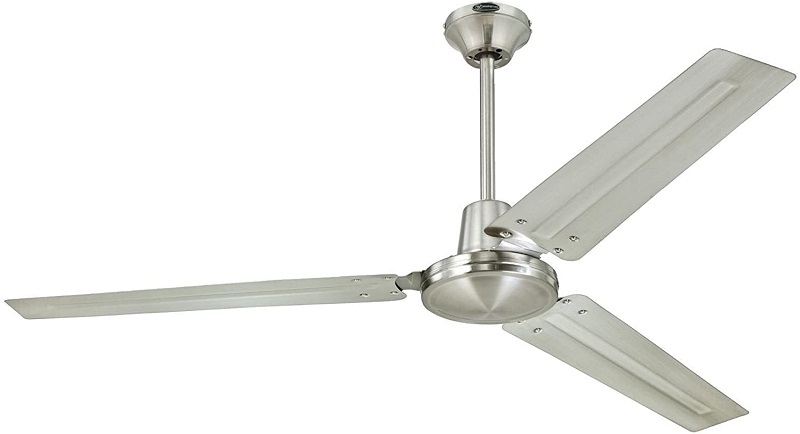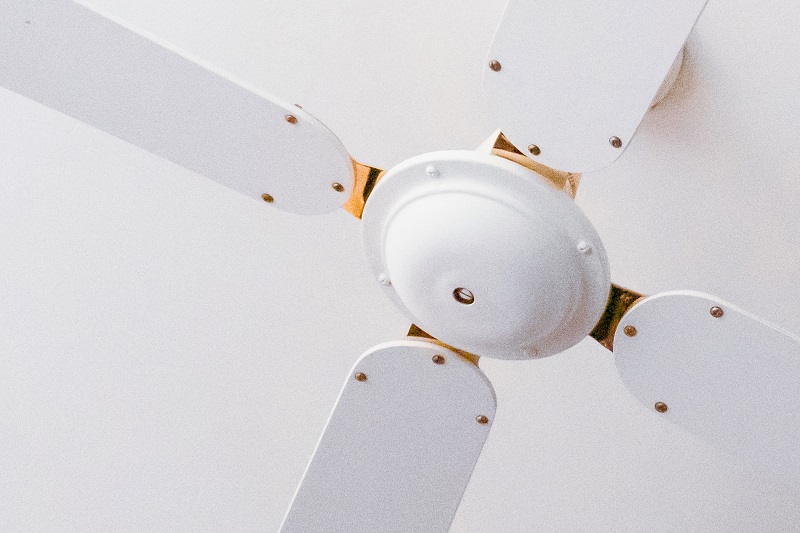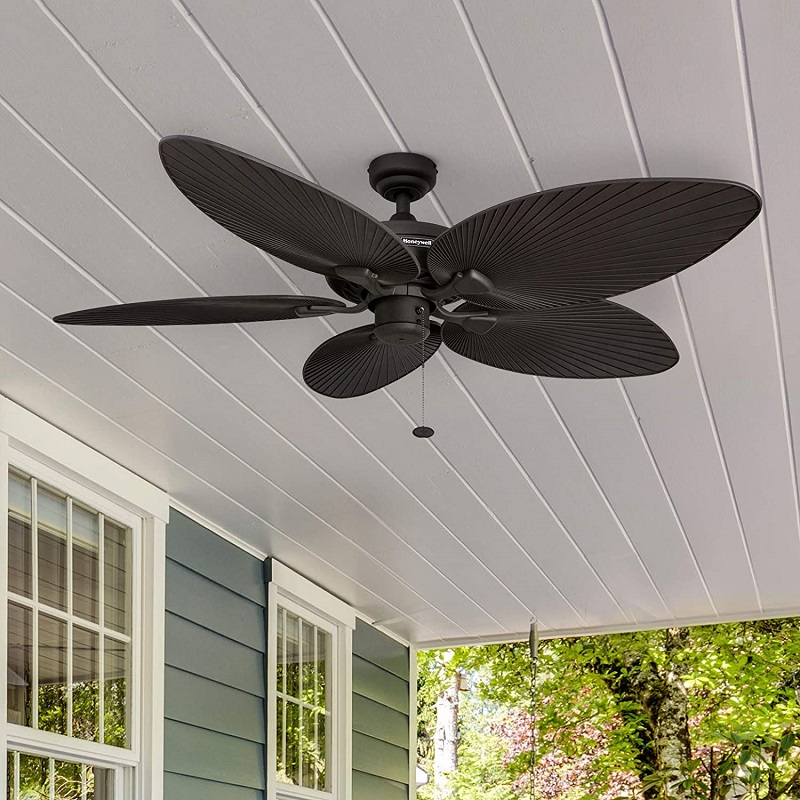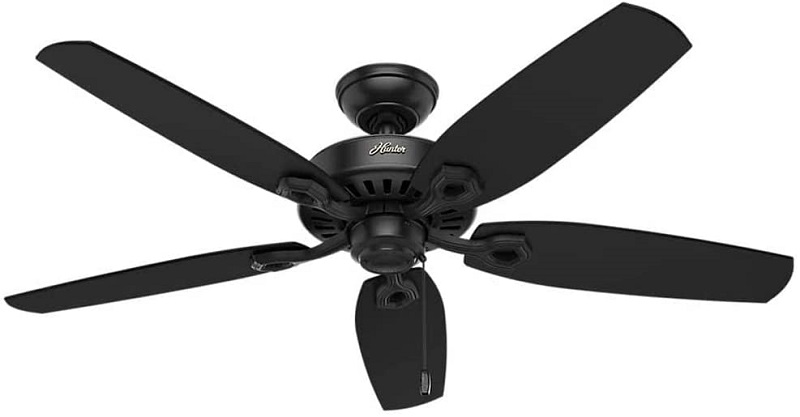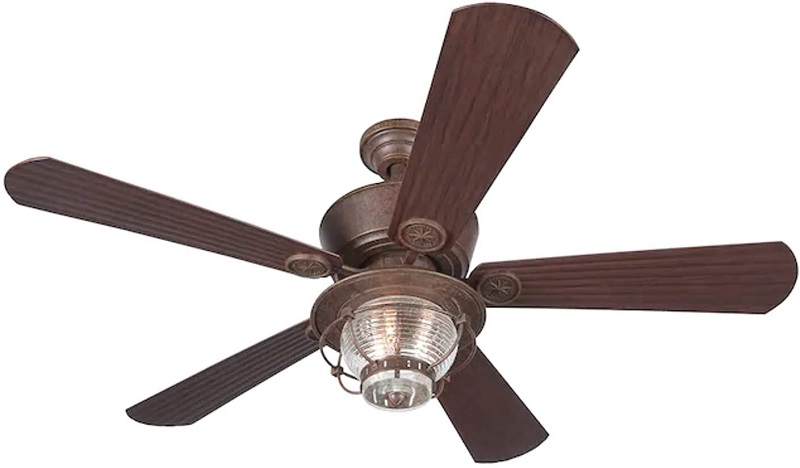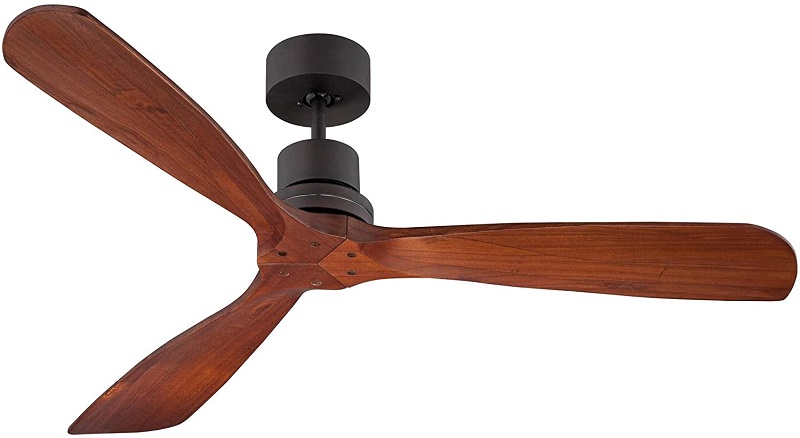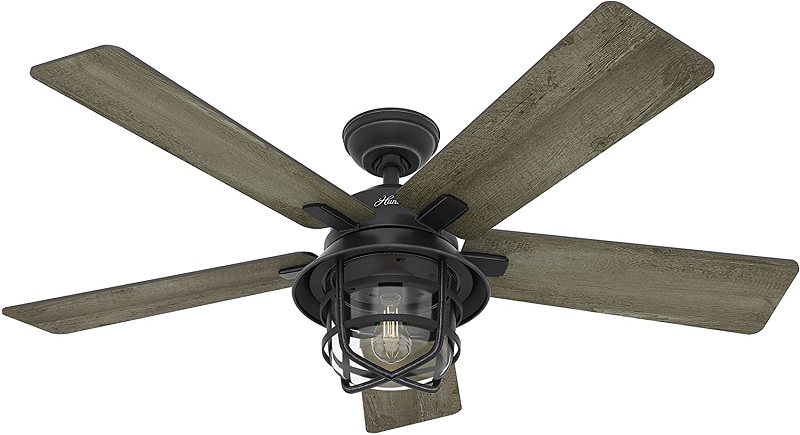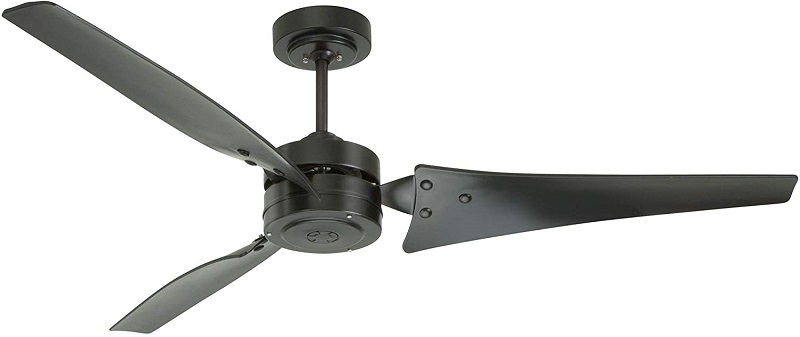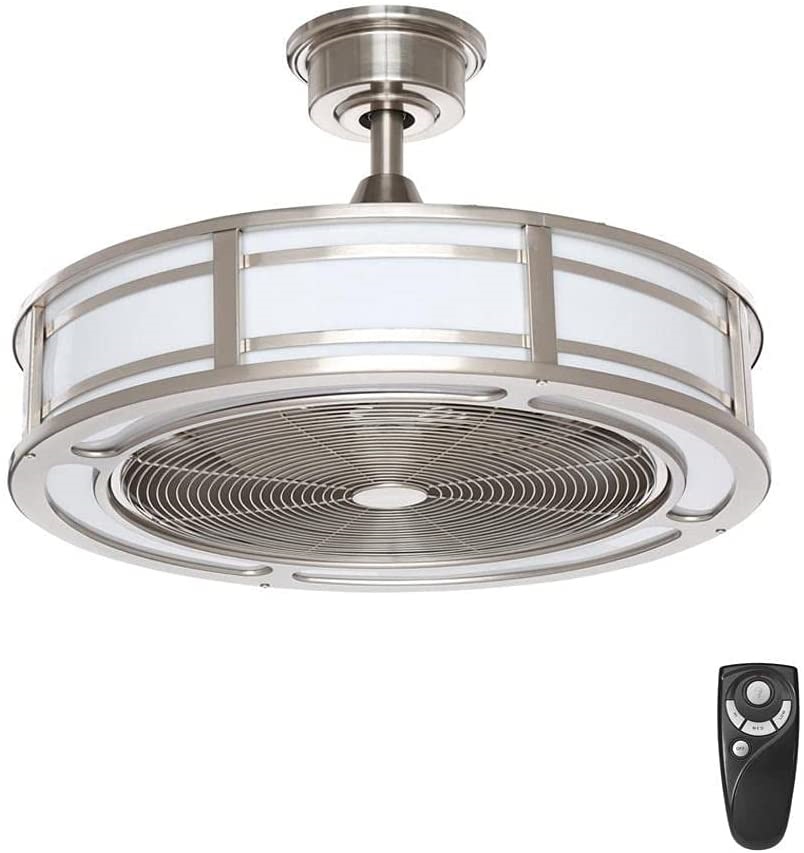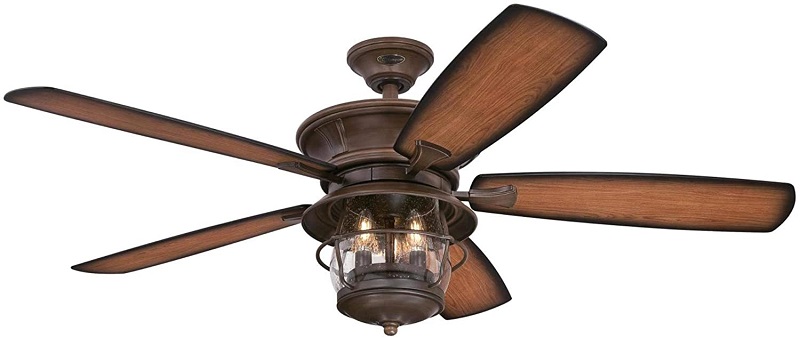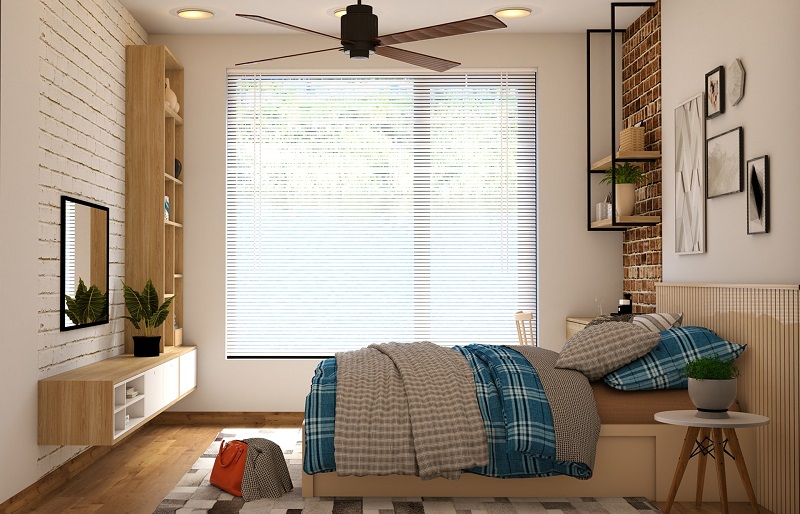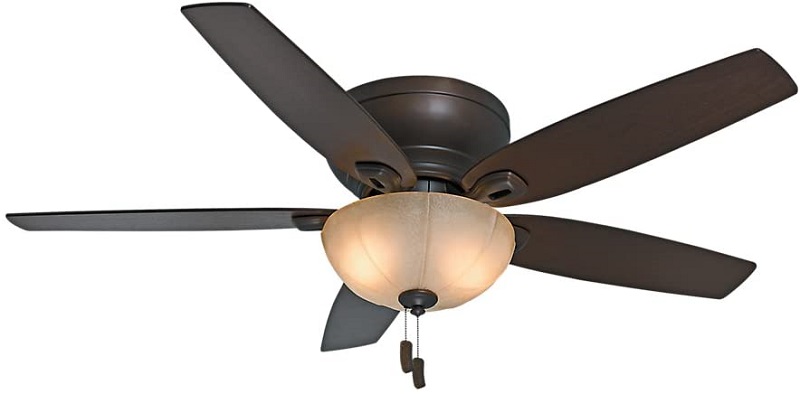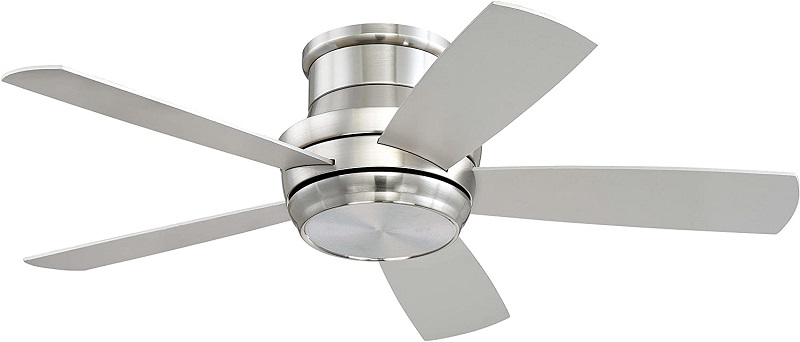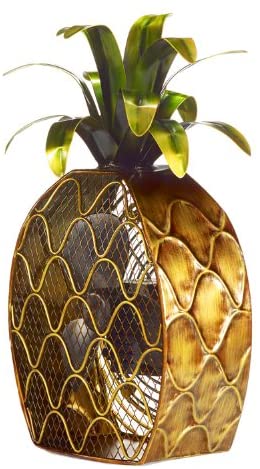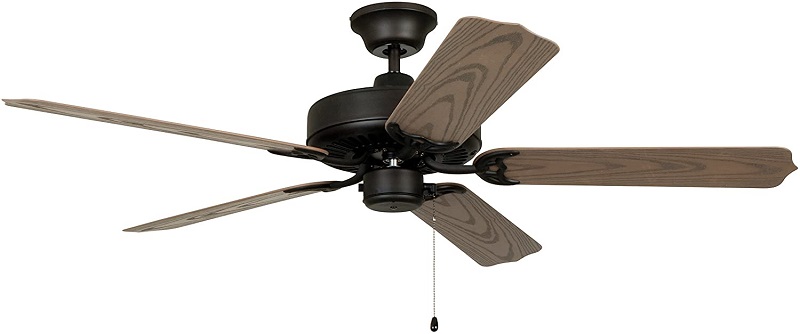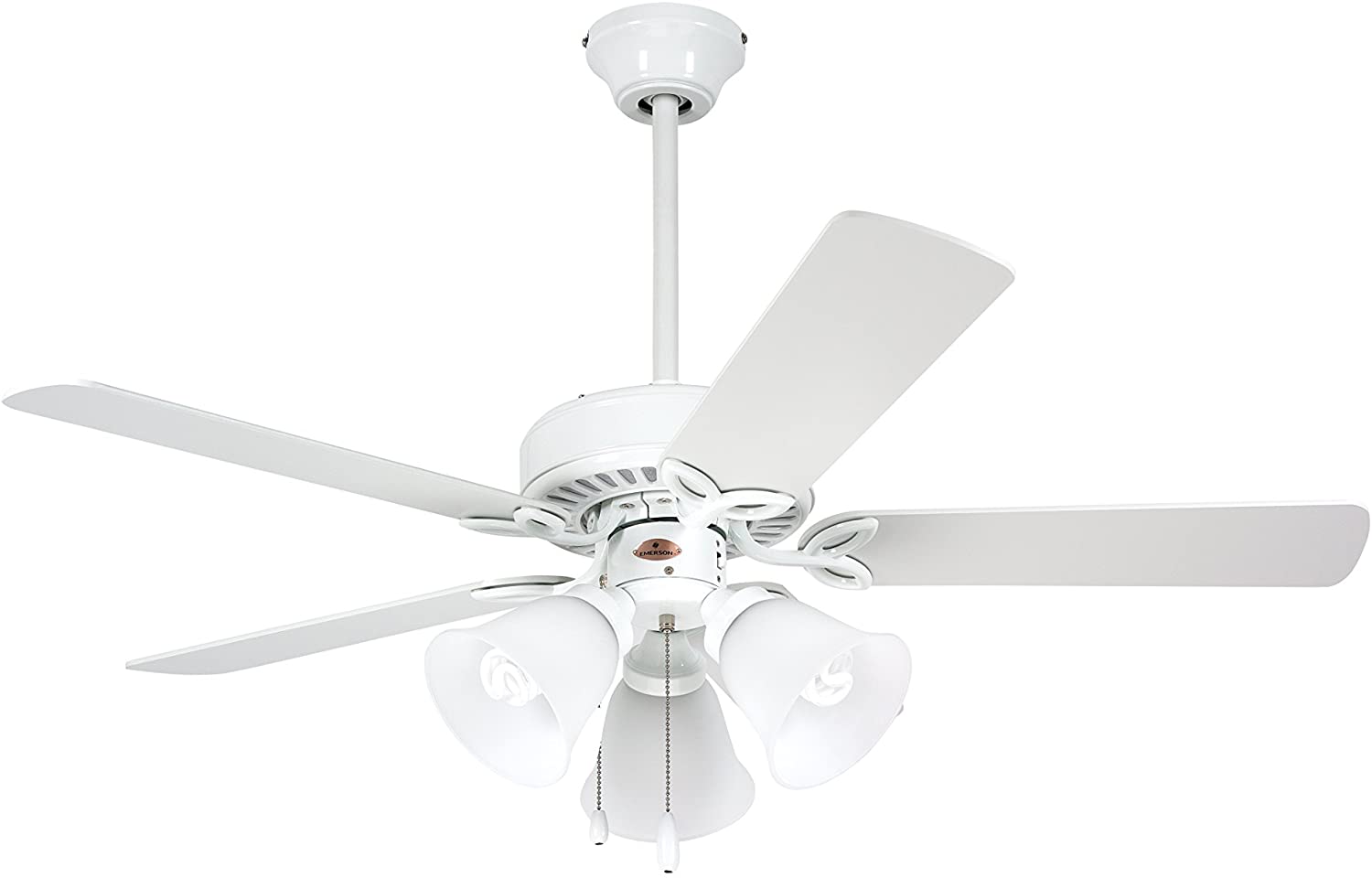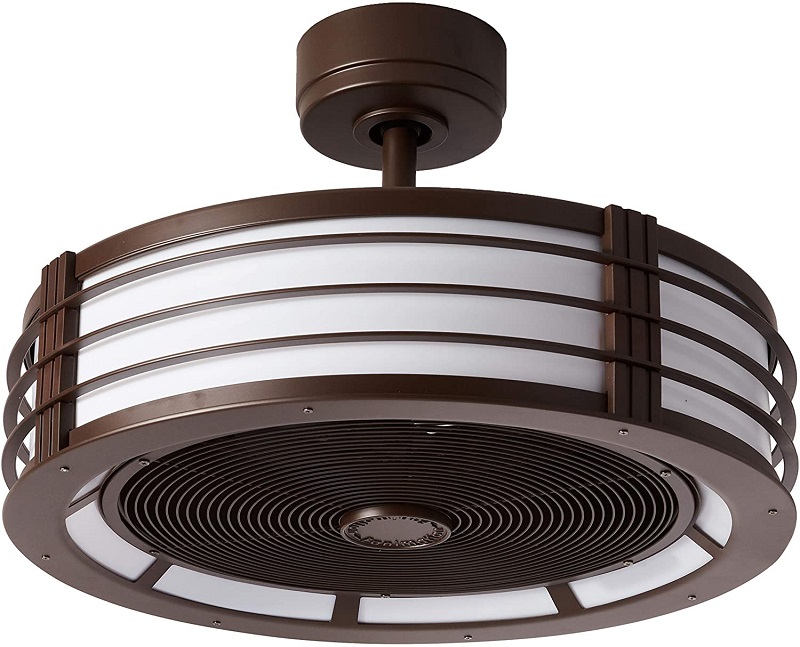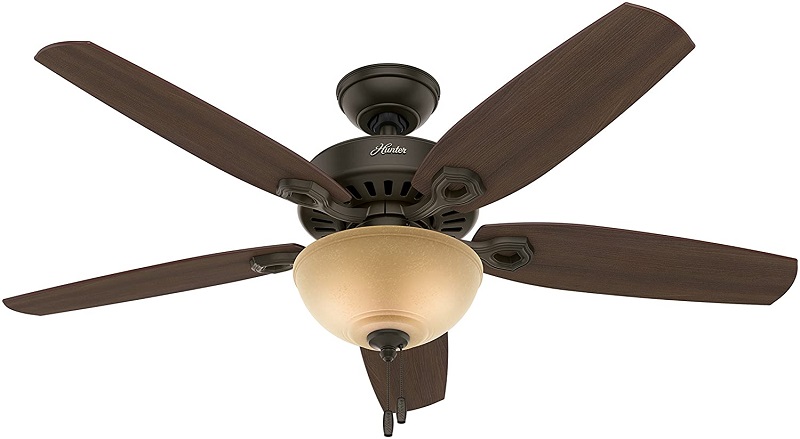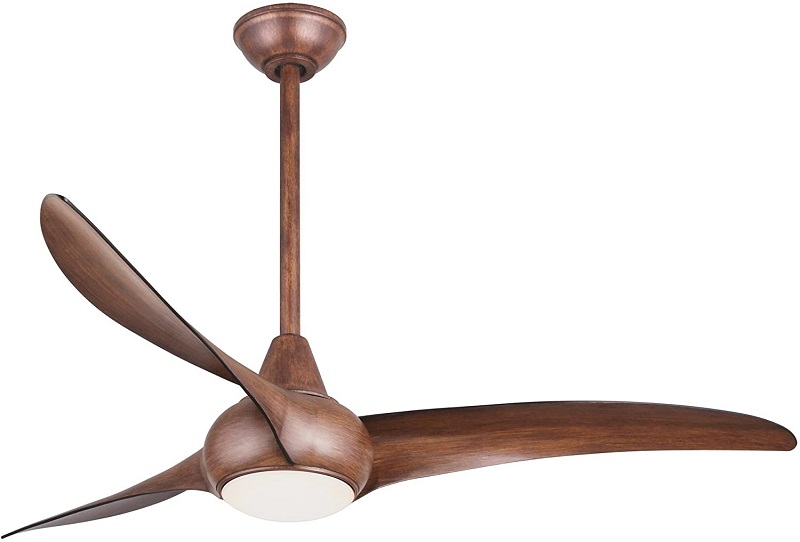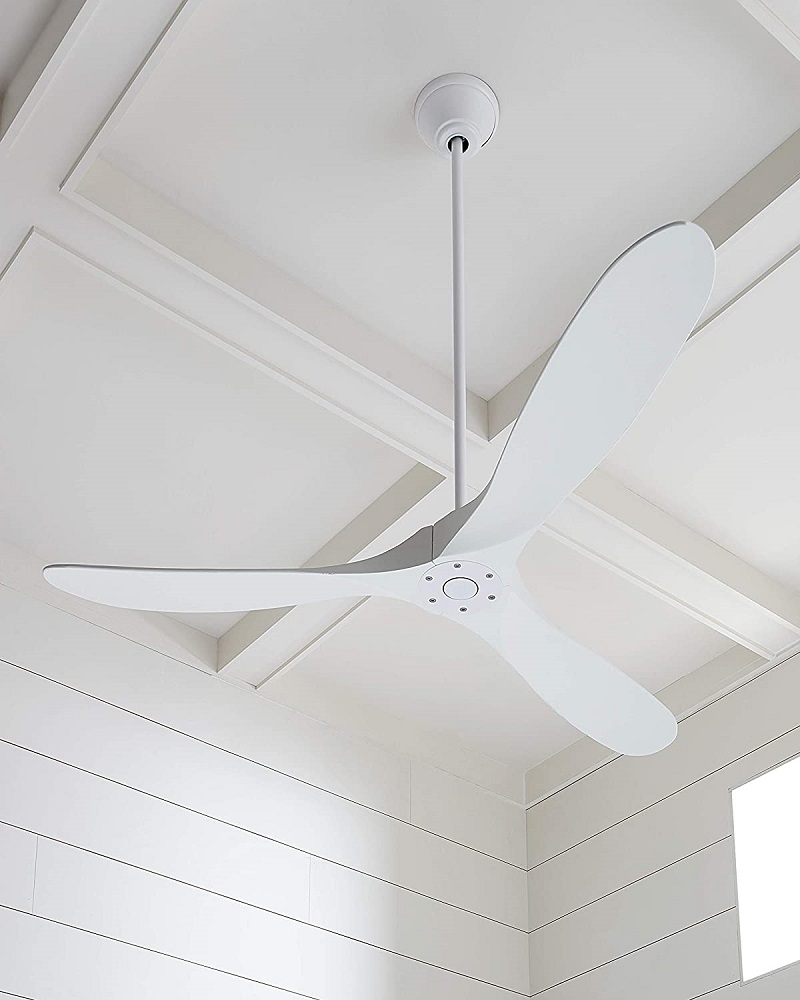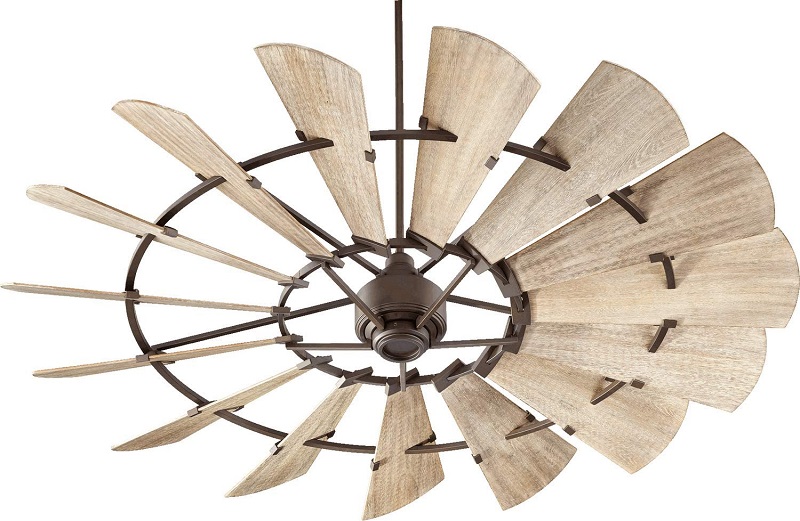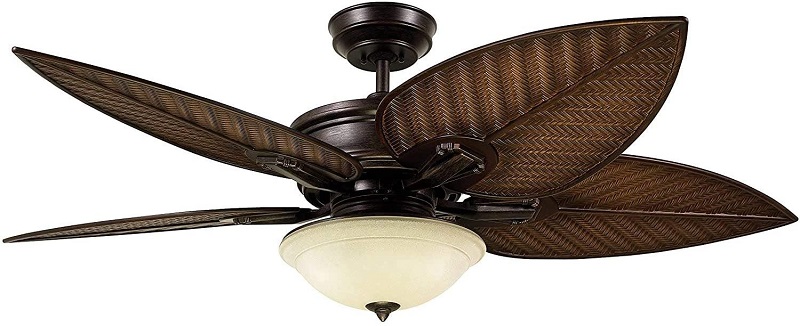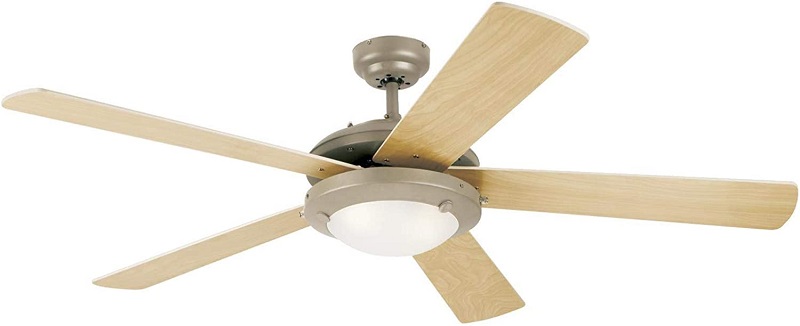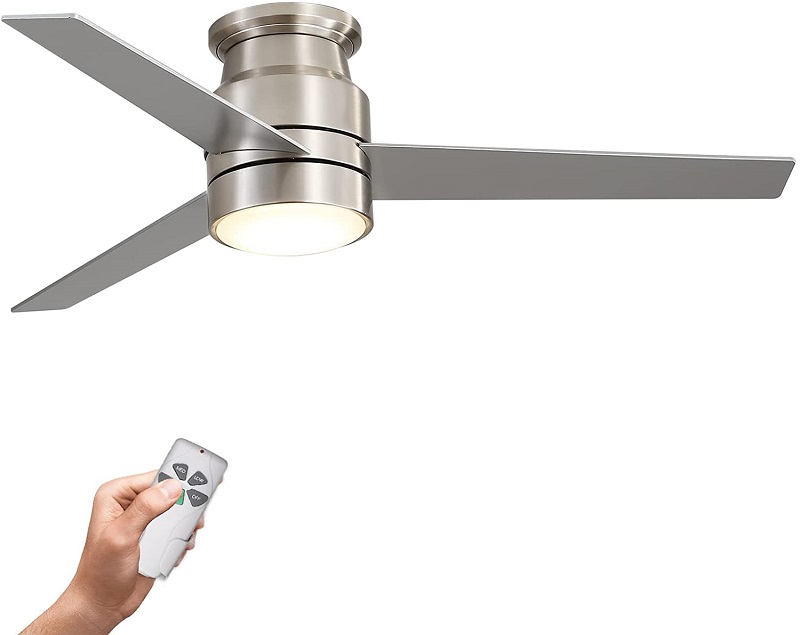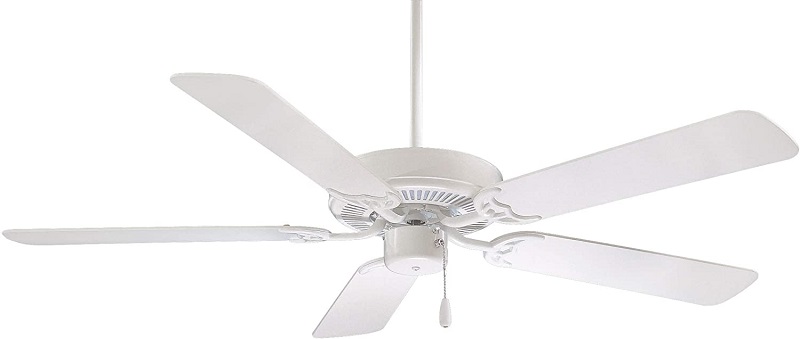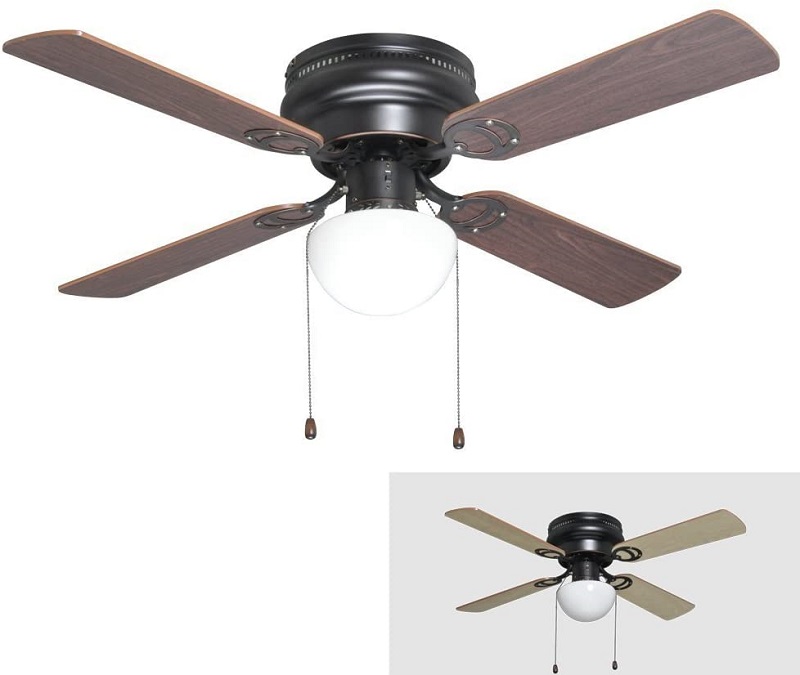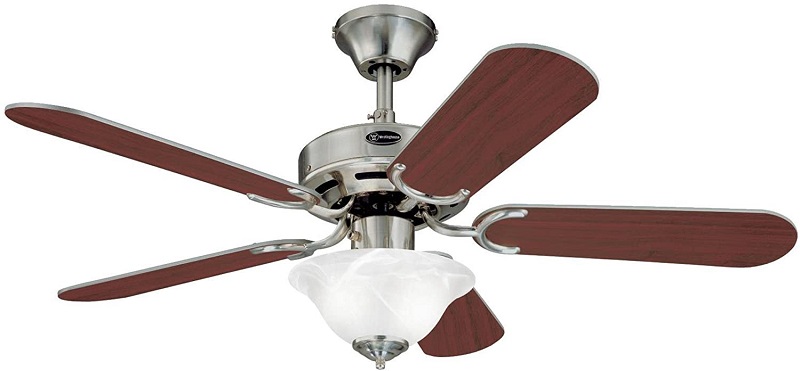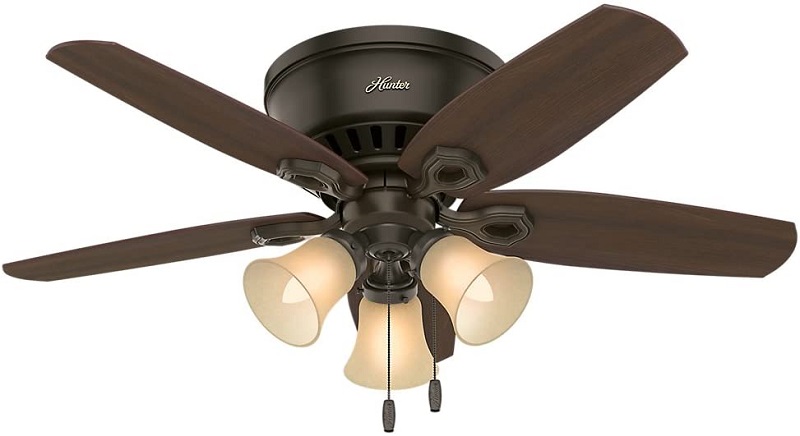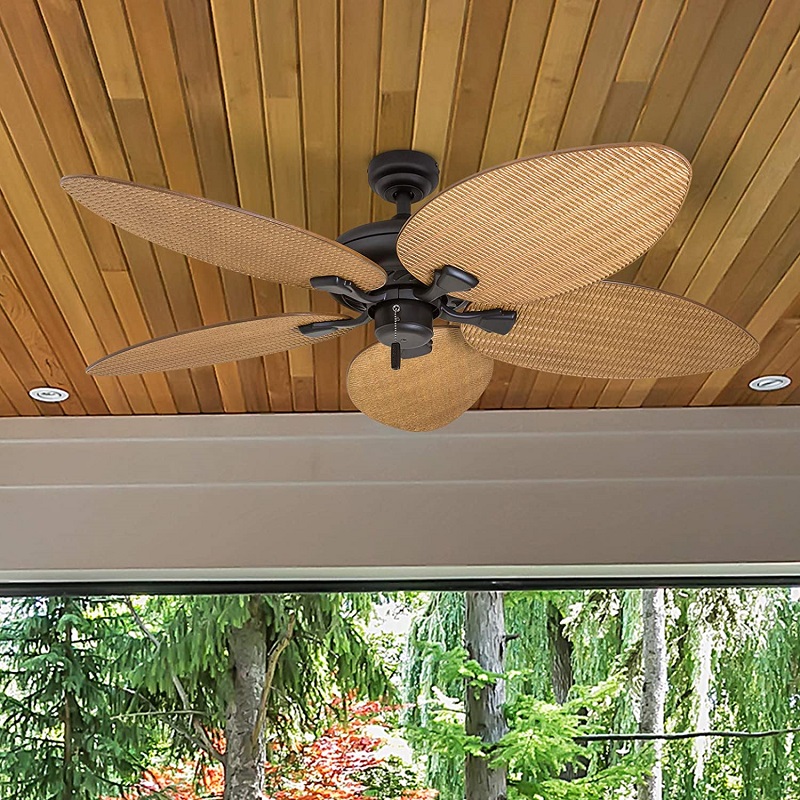Most people will spend about one-third of their lives in their bedroom. You might as well be comfortable while you’re in there, right? One of the easiest ways to create comfort in the bedroom is to install a ceiling fan. The best bedroom ceiling fans can complement the design of the room, eliminate the clutter of portable fans or air conditioning units, and even save you some cash on your utility bills when you manage your energy correctly.
Table could not be displayed.
Which Are the Best Bedroom Ceiling Fans?
Buyer’s remorse is common when shopping for a ceiling fan that will be installed in the bedroom. Some ceiling fans hum or vibrate, which can disrupt sleep. Others provide so much air movement that you feel like a warm blanket is required in the middle of the summer. Others offer so little airflow that you begin to wonder if the ceiling fan is working right.
These top-rated models will put those concerns to rest right away.
How to Find the Best Product for Me
Your quest to find the fan begins with a measurement of your bedroom. You’ll need to find the square footage of the room where the fan will be installed.
Do not include closet measurements with your bedroom measurement unless you have an open closet.
To determine the square footage of your bedroom, multiply the width by the length. A bedroom that is 10 feet long and 8 feet wide has 80 square feet. Rough measurements are suitable for bedrooms that may have multiple angles to keep the math simple.
Once you have your square footage, compare it to the points below to find a ceiling fan with the correct dimensions.
- 80 Square Feet or Less: A blade span of 24 inches to 42 inches is suitable.
- 150 Square Feet or Less: A blade span of 44 inches to 50 inches is required.
- 150 to 300 Square Feet: A blade span of 52 inches to 60 inches will be needed.
- Over 300 Square feet: A blade span of 62 inches to 84 inches is necessary.
Then you’ll need to measure the height of your ceiling in the bedroom. Never assume the ceiling heights in other rooms of the house are the same as the bedroom. Measure from the floor to the ceiling. This will help you to determine if a down rod is needed for your ceiling fan.
For a bedroom with a vaulted ceiling, a 60-inch down rod is required for a 15-foot ceiling. On the other end of the spectrum, an 8-foot ceiling requires no down rod. Add 6 inches to your needed down rod length for every foot of space above 8 feet. A 9-foot bedroom ceiling, for example, would require a 6-inch down rod.
Then take a look at the fan motor for your preferred ceiling fan style. If you are a light sleeper, you will want to purchase a ceiling fan that is equipped with a DC motor. Direct current motors have a better energy efficiency rating and are very quiet, but they also tend to cost more. Energy Star ceiling fans tend to be a little quieter than traditional models and will still save up to 20% on utility costs when used correctly.
As a last step, select your finish. Try to have the blades of your fan complement a design element in the bedroom. Match your furniture, carpet, or paint colors for best results. There is no set rule here, however, so choose whatever design that speaks to you while shopping.
What is CFM and Why Should I Care?
Size is a common way to separate ceiling fans for the bedroom, but there is another statistic to think about as well: CFM.
CFM stands for Cubic Feet per Minute. It is a measurement of the amount of airflow that the ceiling fan can produce. Higher numbers usually indicate that you’ll receive better air movement when standing beneath the fan.
CFM is a somewhat subjective statistic, however, which is why it is not usually used to compare ceiling fans. If you place the same ceiling fan in a large room and a small room, you’ll receive a higher CFM from that fan in the smaller room.
Ceiling fan manufacturers can use their own testing methods to develop a CFM rating for their ceiling fan. They can make a specific recommendation on bedroom size and then assign the CFM based on that recommendation. If your bedroom is larger than the testing sample, then the CFM will be lower.
In general terms, you should look for a ceiling fan with a CFM rating of at least 4,000. Models that offer a 6,000 CFM are usually considered to be an energy efficient product. Top-rated bedroom ceiling fans can achieve a CFM of 7,500 under certain conditions.
What About Installing a Ceiling Fan in a Child’s Bedroom?
Ceiling fans can be an excellent addition to the bedroom of a child. It is even an option to think about if you’re converting one of your rooms into a nursery.
For older children, look for models that are designed to be somewhat impact-resistant. When kids are playing in their room, you never know what might happen. Try to avoid glass bowls or lamp shades if a light kit is required for the room as well.
The best cheap ceiling fans might be an alternative to consider if you’d like to try out the idea of a ceiling fan in a child’s room first.
Do I Need to Worry About an Indoor-Only Rating on My Ceiling Fan?
Bedrooms are a unique quandary when trying to find the best ceiling fan. Some bedrooms are so small that they feel cramped with a twin-sized bed in them. Others are large and expansive, making even the largest ceiling fans in this category feel like they are undersized. Choosing the correct one for your space can be difficult.
Difficult, however, is not the same as “impossible.”
After you’ve determined the correct size for your bedroom ceiling fan, it is important to consider the ratings of the fan before finalizing your purchase. Many of the fans in this category are rated as “indoor-only” fans.
That makes sense, right? Most bedrooms are indoors, after all.
The only problem is that not every bedroom qualifies as an indoor environment based on the manufacturing specifications of the ceiling fan.
Here’s the problem. If you have a master bedroom in your home, then there’s a good chance that you have a master bathroom there as well. Most master bathrooms today incorporate a sink, a toilet, and a bathtub. There’s a good chance that you’ve got a shower and bathtub combination.
Think about what happens when you take a shower. When you turn the hot spray on, a cloud of water vapor begins to rise. Over time, as you stay in the shower, the temperature of the room changes. The vapor disappears, but leaves fog behind on your mirror and perhaps a wet residue on your wall.
An exhaust fan in the bathroom should take care of this extra moisture, but many of them do not. You could even open a window and there would still be excessive moisture in the bathroom.
Now you open the door back to your bedroom. What happens next? All that trapped moisture begins to roll out of the bathroom into the drier environment of the bedroom. Like it did in the bathroom, the vapor will begin to rise toward the ceiling. It will begin to travel throughout the bedroom.
And that is when it will encounter your ceiling fan.
If you have a bedroom that adjoins a bathroom and you’re thinking about a ceiling fan for that space, then look for a damp-rated ceiling fan instead of an indoor-only ceiling fan.
You may not find the right look in this category should a damp-rated ceiling fan be required. Before giving up, try going through the best outdoor ceiling fans since they will have the damp rating your bedroom will likely need.
A little moisture can quickly damage an indoor-only fan. In this circumstance, it is always better to be cautious. Moisture damage to an indoor-only fan could void its warranty.
Cost Expectations
Ceiling fans for the bedroom are reasonably affordable and come at a variety of price points. Most models that are top-rated will be priced around $100, though some can be a little cheaper or cost a little more.
If you’re looking for a specific style, however, the cost will begin to rise. Some models can be priced above $300 if you’re looking for a certain wood or a specific finish.
Our Reviews
 With its swept-up blade design, brushed nickel finish with matte black blades, and quiet convenience, this fan will exceed your expectations. A remote control is included with this ceiling fan, allowing you to take full control of its 3 speeds. You also have a smart sync feature that makes setting up the fan a simple process and there is a light delay option that allows you to walk away without worrying about energy waste.
With its swept-up blade design, brushed nickel finish with matte black blades, and quiet convenience, this fan will exceed your expectations. A remote control is included with this ceiling fan, allowing you to take full control of its 3 speeds. You also have a smart sync feature that makes setting up the fan a simple process and there is a light delay option that allows you to walk away without worrying about energy waste.
Click here to find the best price on Amazon.
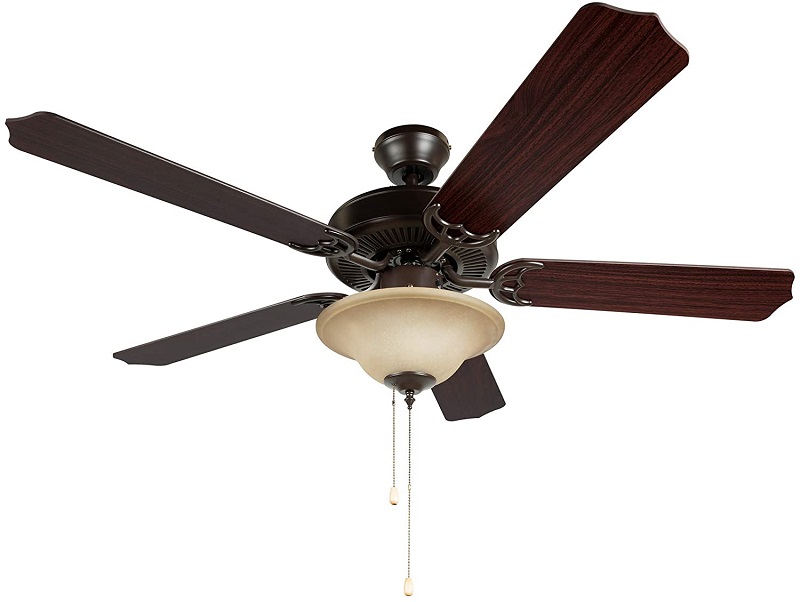 If you want a slightly darker look, you can flip the white blade over to have a maple wood veneer. The shading is subtle, but enough to provide some contrast to the look for your bedroom. The remote control for the ceiling fan is rather simple to use. You can turn the light on or off with the push of a button. The fan also turns on or off and you can immediately change the fan speed setting. You cannot control the spin direction with the remote, however, as that requires moving a toggle switch on the fan.
If you want a slightly darker look, you can flip the white blade over to have a maple wood veneer. The shading is subtle, but enough to provide some contrast to the look for your bedroom. The remote control for the ceiling fan is rather simple to use. You can turn the light on or off with the push of a button. The fan also turns on or off and you can immediately change the fan speed setting. You cannot control the spin direction with the remote, however, as that requires moving a toggle switch on the fan.
Click here to find the best price on Amazon.
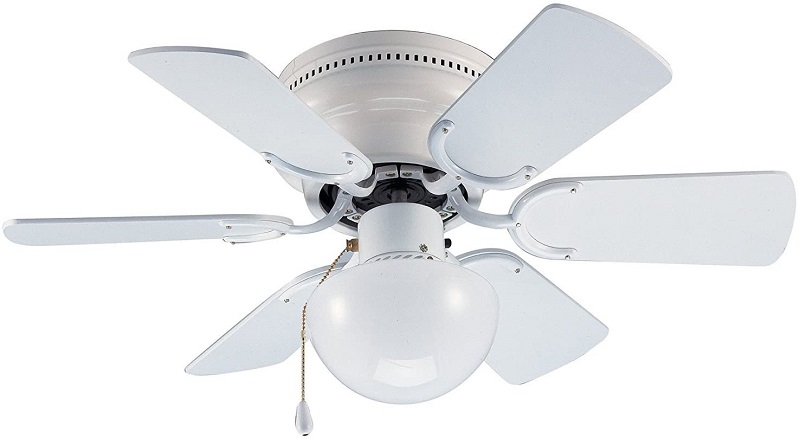 The light kit does extend a little further down than some might like. If you’re using this in a child’s bedroom and there are bunk beds in a smaller room, you might impact the blades or the light fixture, despite the 30-inch size. The fan itself is very quiet. You can hear the air movement and there is a bit of a hum as the motor starts up, but otherwise you won’t notice this fan operating. Even in an 80-square-foot bedroom, there is no issue with sleeping. There is a slightly louder hum on the lowest setting that might disturb light sleepers.
The light kit does extend a little further down than some might like. If you’re using this in a child’s bedroom and there are bunk beds in a smaller room, you might impact the blades or the light fixture, despite the 30-inch size. The fan itself is very quiet. You can hear the air movement and there is a bit of a hum as the motor starts up, but otherwise you won’t notice this fan operating. Even in an 80-square-foot bedroom, there is no issue with sleeping. There is a slightly louder hum on the lowest setting that might disturb light sleepers.
Click here to find the best price on Amazon.
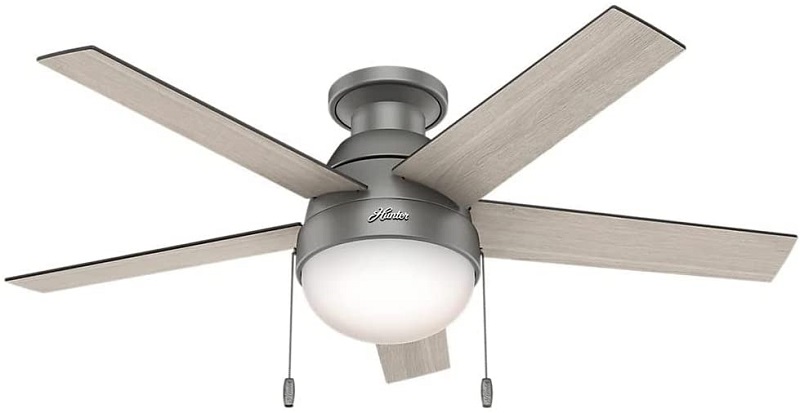 On its highest setting, the Anslee is able to achieve a CFM rating of 3954. The blades are technically reversible, but we felt that following the standard installation instructions provided the best results for using this fan. You will want to take your time with the installation process for this fan. The blades meet their mounts at a slight angle, which can make it a challenge to install them. It took us a good couple of hours to get through the process, which is about double the time it takes for most ceiling fans that we looked at.
On its highest setting, the Anslee is able to achieve a CFM rating of 3954. The blades are technically reversible, but we felt that following the standard installation instructions provided the best results for using this fan. You will want to take your time with the installation process for this fan. The blades meet their mounts at a slight angle, which can make it a challenge to install them. It took us a good couple of hours to get through the process, which is about double the time it takes for most ceiling fans that we looked at.
Click here to find the best price on Amazon.
 The total height from the canopy to the bottom of the light fixture is just under 12 inches with its flush-mount design. That makes it a suitable option for bedroom ceilings that are between 8 and 8.5 feet high. It’s one of the few ceiling fans with a hugger design that is approved for 8-foot ceilings. Once installed, the ceiling fan looks great and the performance is consistent over time. We did find that if you run the ceiling fan on the lowest setting consistently that it can develop a slight hum over time. We would recommend using a faster speed or varying your fan speeds to prevent this issue from occurring.
The total height from the canopy to the bottom of the light fixture is just under 12 inches with its flush-mount design. That makes it a suitable option for bedroom ceilings that are between 8 and 8.5 feet high. It’s one of the few ceiling fans with a hugger design that is approved for 8-foot ceilings. Once installed, the ceiling fan looks great and the performance is consistent over time. We did find that if you run the ceiling fan on the lowest setting consistently that it can develop a slight hum over time. We would recommend using a faster speed or varying your fan speeds to prevent this issue from occurring.
Click here to find the best price on Amazon.
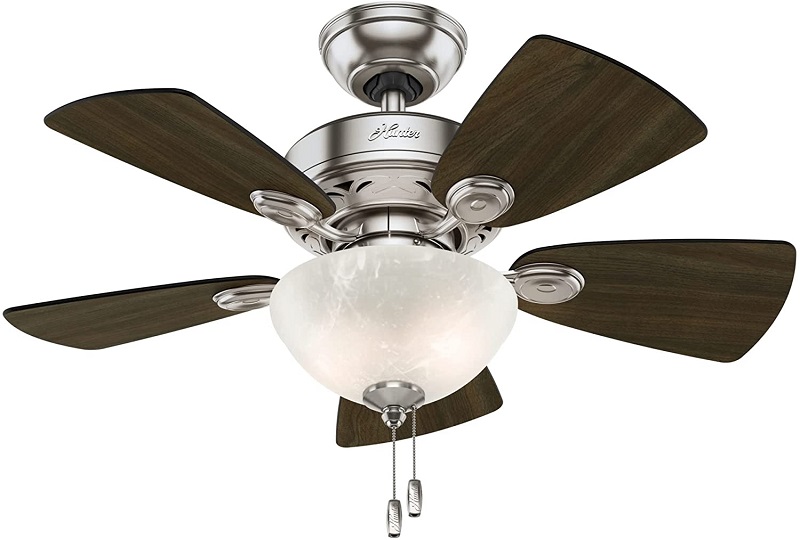 This small ceiling fan proves that good things really can come in small packages. At 34 inches, it may not be able to provide comfort in a large bedroom, but it certainly works well in smaller bedrooms. Three different finishes are available so you can complement your existing design ideas. You can also use this fan as a way to create a new look as well. With beautifully rich wood tones and one of the quietest motors around, this fan can be best described as an “affordable masterpiece.”
This small ceiling fan proves that good things really can come in small packages. At 34 inches, it may not be able to provide comfort in a large bedroom, but it certainly works well in smaller bedrooms. Three different finishes are available so you can complement your existing design ideas. You can also use this fan as a way to create a new look as well. With beautifully rich wood tones and one of the quietest motors around, this fan can be best described as an “affordable masterpiece.”
Click here to find the best price on Amazon.
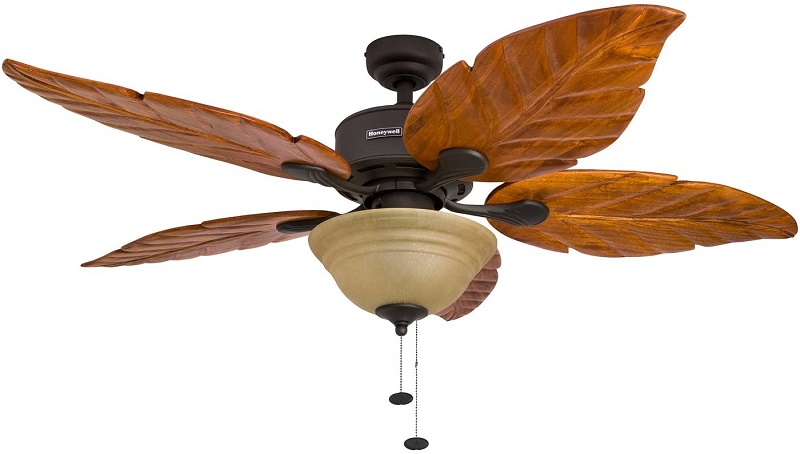 This is the ceiling fan for a bedroom that takes its atmosphere seriously. It has been said that a bedroom should only be used for relaxation, sleep, and intimacy. With its carved blades and charming personality, this ceiling fan can help you create the right mood at all times. Even the sandy-colored glass bowl creates a certain lighting ambience that speaks of the tropics, whether you live in Hawaii or New Jersey. It is definitely one of the better value investments that you’ll find in this category right now.
This is the ceiling fan for a bedroom that takes its atmosphere seriously. It has been said that a bedroom should only be used for relaxation, sleep, and intimacy. With its carved blades and charming personality, this ceiling fan can help you create the right mood at all times. Even the sandy-colored glass bowl creates a certain lighting ambience that speaks of the tropics, whether you live in Hawaii or New Jersey. It is definitely one of the better value investments that you’ll find in this category right now.
Click here to find the best price on Amazon.
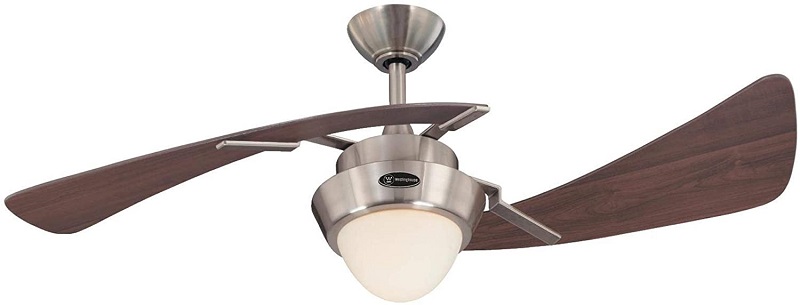 If you believe that ceiling fans are going out of style, this particular model will challenge that assumption. It offers a modern 2-blade design, similar to an airplane propeller, with an upswept look that powers through plenty of air to give you the movement you want. At 48-inches, it almost feels undersized once you have it installed. A light kit is included with this model as well and the motor is backed by a limited lifetime warranty. It is quiet, consistent, and its reversible spin and 4 speed settings make it a useful addition to the home all year long.
If you believe that ceiling fans are going out of style, this particular model will challenge that assumption. It offers a modern 2-blade design, similar to an airplane propeller, with an upswept look that powers through plenty of air to give you the movement you want. At 48-inches, it almost feels undersized once you have it installed. A light kit is included with this model as well and the motor is backed by a limited lifetime warranty. It is quiet, consistent, and its reversible spin and 4 speed settings make it a useful addition to the home all year long.
Click here to find the best price on Amazon.
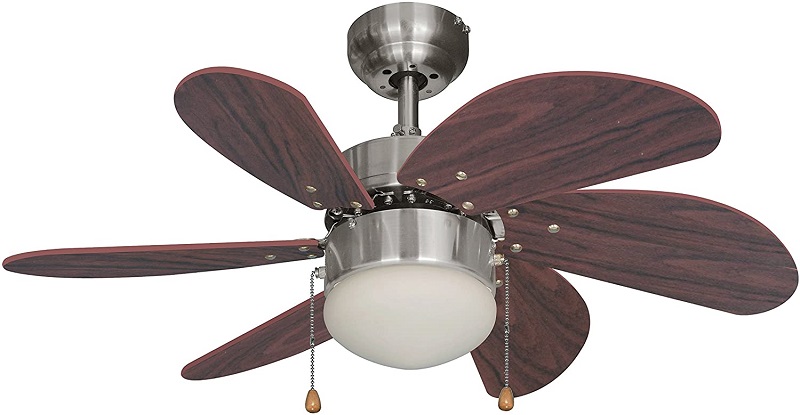 This 6-bladed design is perfect for smaller rooms, as is the 30-inch total diameter of the fan. The motor on this small unit is reversible for all-season support. It is UL-listed, backed by a 3-year limited warranty, and rated to provide airflow help in rooms up to 196 square feet in size. The lamp shade comes equipped with a single E12 base screw and bulb. The manufacturer recommends using lower than 60w LED bulbs for best results. Halogens or incandescent bulbs could cause shade cracking.
This 6-bladed design is perfect for smaller rooms, as is the 30-inch total diameter of the fan. The motor on this small unit is reversible for all-season support. It is UL-listed, backed by a 3-year limited warranty, and rated to provide airflow help in rooms up to 196 square feet in size. The lamp shade comes equipped with a single E12 base screw and bulb. The manufacturer recommends using lower than 60w LED bulbs for best results. Halogens or incandescent bulbs could cause shade cracking.
Click here to find the best price on Amazon.
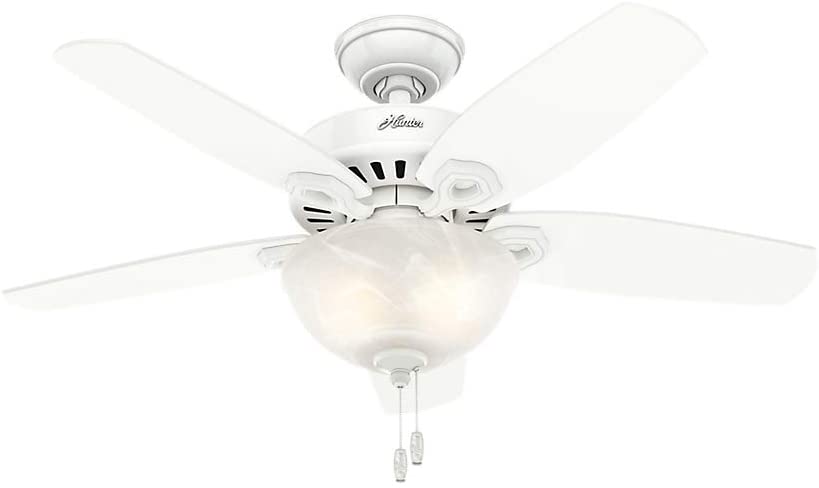 This ceiling fan option might be shaped in a traditional design, but the finishes are far from that description. One of the most powerful design options you can use is the snow white finish, creating a beautiful centerpiece for a bedroom that will still keep you comfortable at night. You get enough airflow to want the covers in the summer. In winter, reverse the spin and you can stop the hot air from constantly rising above you. We really loved the complete value that this affordable fan provides and think it is one of the best ceiling fans in any category. Period.
This ceiling fan option might be shaped in a traditional design, but the finishes are far from that description. One of the most powerful design options you can use is the snow white finish, creating a beautiful centerpiece for a bedroom that will still keep you comfortable at night. You get enough airflow to want the covers in the summer. In winter, reverse the spin and you can stop the hot air from constantly rising above you. We really loved the complete value that this affordable fan provides and think it is one of the best ceiling fans in any category. Period.
Click here to find the best price on Amazon.
The best bedroom ceiling fans will help you be comfortable all day and all-night long. Find the perfect way to enhance the look of your space or install something that fits your unique tastes. With the variety of finishes and designs in this category, there is something that will speak to everyone.
